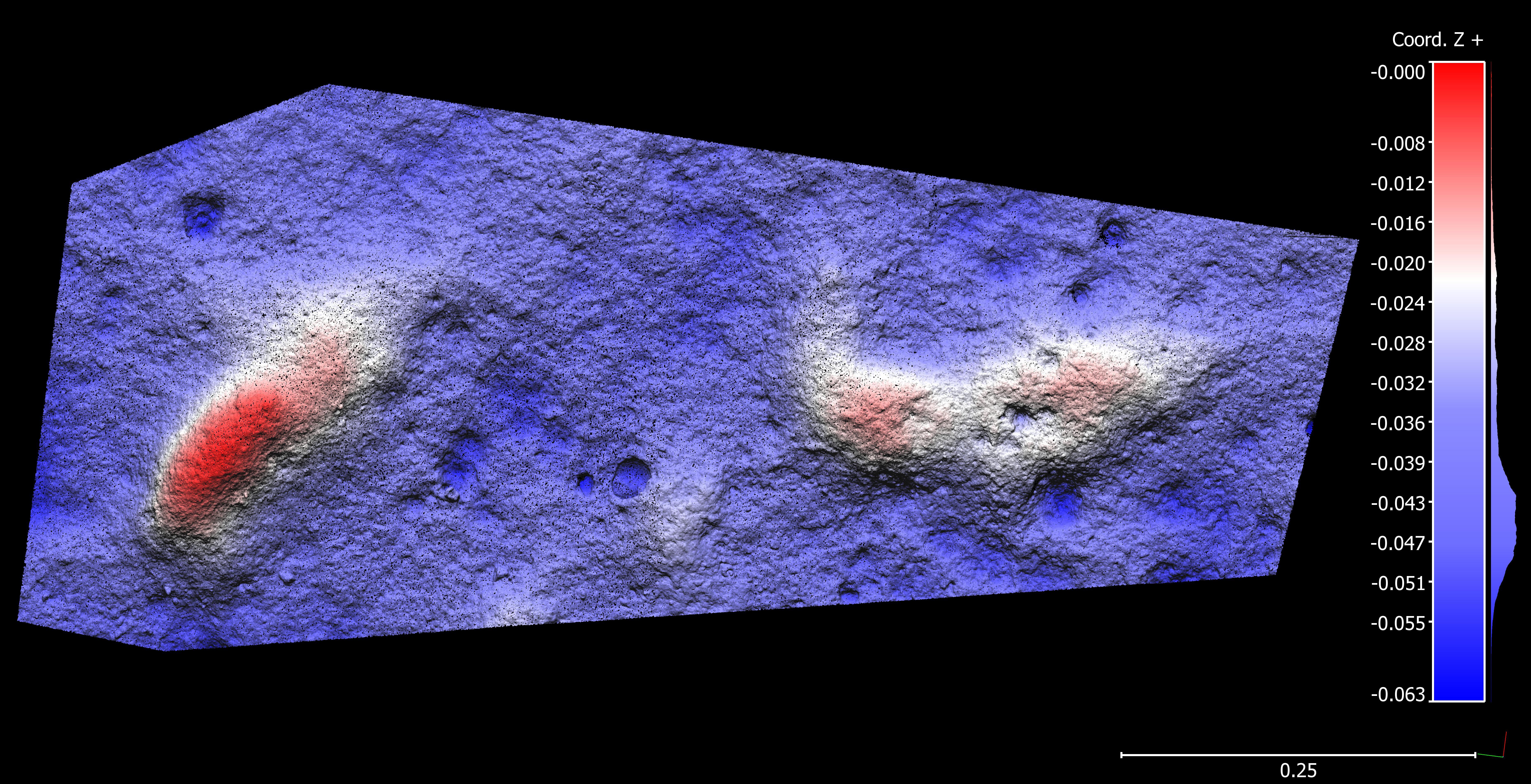They were airlifted to Cape Town, where they are housed in the Iziko South Africa Museum. A replica is on exhibit at the Geelbek Visitor Centre in the West Coast National Park. There has been international debate since then about whether or not “Eve’s footprints” really were human tracks, due to their relatively poor level of preservation.
No further fossilised human tracks have been discovered in the area since then – but a recent find by our research team, also near Langebaan, changes this.
These two tracks, discovered in what is today the ceiling of a small cave, are a remarkable find for three reasons. The first is that modern graffiti on aeolianite surfaces in the area around Langebaan area is prolific. In fact, graffiti was present just inches away from “Eve’s footprints”. A potential fossilised human tracksite on the Cape south coast near Knysna, more than 400 km to the east, was defaced by graffiti before it could be scientifically assessed.
We don’t know precisely when this happened, but we know that the graffiti “artists” got to it before we did. It is therefore possible that fossil tracksites around Langebaan are rare because graffiti has obscured them.
The second reason is that human tracks registered in aeolianites are rare at a global level. The majority of such tracks are found in cave floor deposits or volcanic ash sediments; the South African sites, which were made on dunes and beaches, are an exception. And the third is that our find, made within kilometres of those Roberts discovered in 1995, supports his conclusion that a human ancestor left “Eve’s footprints”.
The tracks
Rudolf Hattingh, a speleologist – he studies caves – and member of our research team, found the two tracks on the small cave’s ceiling while out exploring for caves.
They are natural casts, representing the sediment which filled in the original tracks. The original dune surface on which the tracks were made has been eroded away, and is no longer evident. They are probably of approximately the same age as “Eve’s Footprints”, and therefore from the Late Pleistocene epoch, which began about 126,000 years ago.
 Graffiti in aeolianites at Langebaan. Some potential human tracks have been destroyed by such graffiti. Image: Charles Helm
Graffiti in aeolianites at Langebaan. Some potential human tracks have been destroyed by such graffiti. Image: Charles Helm
The two tracks have approximately the same orientation, and are are an appropriate distance apart (49 cm) for a walking human, which suggests that they form a short trackway segment. They are friable, vulnerable even to light touch, and their margins are not crisply defined – it is possible that more detail might have been present if they had been discovered earlier.
Track length is approximately 28 cm (although this may include a heel drag), width is 13 cm, and depth is 3-4 cm. One of the tracks contains a possible outline of a hallux (big toe). Both tracks show an outward convexity, suggesting the presence of a medial arch. These features are all broadly consistent with a human trackmaker walking on a dry, non-cohesive dune surface.
We would have preferred a longer trackway and tracks which showed more anatomical detail morphology. Nonetheless, the identification of new probable human tracks at Langebaan, free of graffiti, is still a significant find. Although extinct members of our genus like Homo naledi and Homo helmei cannot be completely excluded, we believe the likelihood is that these tracks, like “Eve’s Footprints”, were made by one of our direct Homo sapiens ancestors.
Potential for more?
Although the focus of our work is on the Cape south coast, not the west coast, this discovery is a spur to keep exploring in the Langebaan area, especially in the few remaining areas that are free of graffiti.
It also inspires us to be vigilant for cliff-collapse events which may create new aeolianite exposures on this coastline. Fossil tracks are evocative: they can readily transport us back in time and lead us think what it must have been like to walk on a dune more than 100,000 years ago, near what is today known as Langebaan. DM/ML
This story was first published in The Conversation.
Charles Helm is a research associate at the African Centre for Coastal Palaeoscience, Nelson Mandela University.




 Graffiti in aeolianites at Langebaan. Some potential human tracks have been destroyed by such graffiti. Image: Charles Helm
Graffiti in aeolianites at Langebaan. Some potential human tracks have been destroyed by such graffiti. Image: Charles Helm